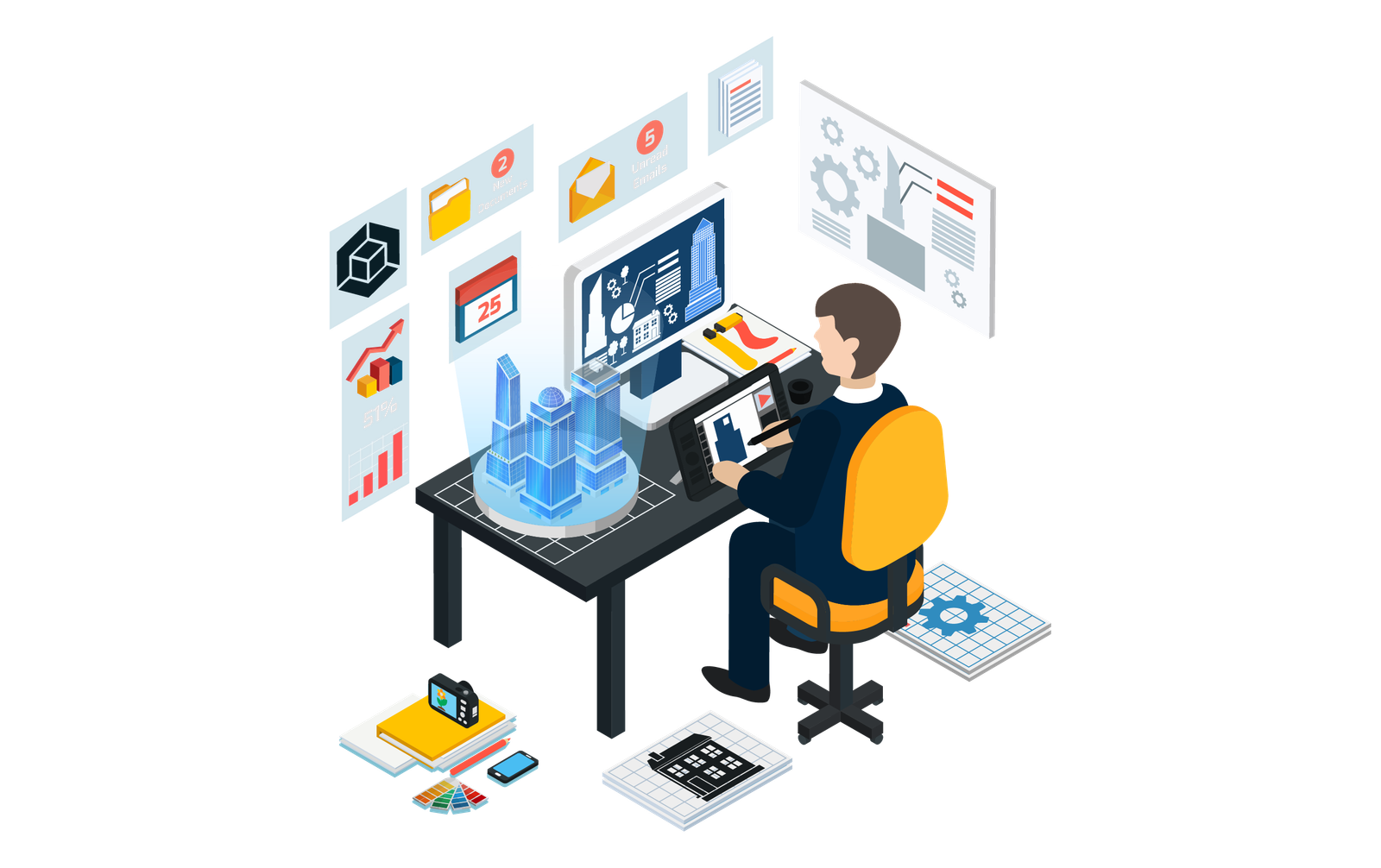
3D Modeling is the process of creating a three-dimensional representation of objects or scenes using specialized computer software. It involves creating digital models that can be manipulated and viewed from various angles and perspectives. 3D models can be used in a wide range of applications, including animation, video games, virtual reality, architecture, industrial design, and product visualization.
The process of 3D modeling typically starts with the creation of a basic shape or mesh that represents the object or scene. This can be done using various techniques, such as polygonal modeling, NURBS modeling, or sculpting. Once the basic shape is created, details like textures, colors, and lighting can be added to make the model more realistic.
3D Modeling software provides tools and features that allow artists and designers to manipulate and refine the models. These tools include options to modify the shape, adjust the position and orientation, apply textures and materials, and add lighting and shadows. Some software also supports advanced features like physics simulations and character rigging for animation purposes.
3D Modeling allows users to create virtual objects with height, width, and depth, replicating real-world objects or entirely imaginary designs.
3D models can be rendered with textures, materials, and lighting to achieve high realism, enabling accurate visualization and representation of objects before they are physically produced.
3D Modeling software provides tools to manipulate and modify objects' shape, size, and position, allowing for easy adjustments and experimentation during the design process.
3D Modeling software supports the creation of intricate and detailed geometries, making it possible to design complex objects and structures with precision.
3D models can be rigged and animated, creating lifelike movements and behaviors, essential for character animation, virtual simulations, and visual effects in movies and games.
3D Modeling software often includes features for collaboration, allowing multiple users to work on the same project simultaneously. Additionally, the iterative nature of 3D modeling enables designers to refine and improve their designs based on feedback and testing.
These features collectively provide designers and artists with powerful tools to bring their ideas to life in a digital space and explore a wide range of possibilities for creative expression and problem-solving.
3D Modeling allows for realistic and detailed visualizations of objects and environments, helping stakeholders and clients better understand and visualize the final product before it is built.
3D Modeling enables precise measurements, accurate scaling, and detailed representations, reducing errors and ensuring that designs meet specific requirements and specifications.
With 3D Modeling, designers can quickly create and modify virtual prototypes, saving time and resources that would otherwise be required for physical prototyping. This facilitates faster design iterations and allows for early detection of design flaws or improvements.
By streamlining the design process, reducing the need for physical prototypes, and minimizing rework, 3D modeling helps save costs and time associated with traditional design methods.
3D models can be easily shared and communicated among stakeholders, facilitating better collaboration and understanding between designers, engineers, clients, and manufacturers. This can lead to improved decision-making and fewer misunderstandings.
3D models can be used for marketing and promotional purposes, showcasing products or designs in a visually appealing and interactive manner. This can help attract customers, secure funding, or gain a competitive advantage in the market.
3D Modeling can be seamlessly integrated with other technologies like virtual reality (VR) and augmented reality (AR), enabling immersive experiences, virtual walkthroughs, and interactive product demonstrations.
These advantages highlight the significant impact of 3D Modeling in enhancing design processes, improving communication, and driving innovation across various industries.
Karbh IT Solutions is a one-way solution to your entire 3D Modeling Development requirements. We offer flexible and customized 3D Modeling Development solutions, targeted from development to optimization. Here at Karbh IT Solutions, you will find developers that are well versed with the development layers of 3D Modeling with deep knowledge of modern technology. We deliver fast and responsive web apps and websites that are feature-rich and easy to maintain.
As one of the well-experienced 3D Modeling development companies in India.
Keep up with the latest Web and Mobile App Technologies
We follow the first and foremost priority of gathering requirements, resources, and information to begin our project.
We create catchy and charming designs with the latest tools of designing to make it a best user-friendly experience.
After designing, you will get your prototype, which will be sent ahead for the development process for the product.
Development of any product started using the latest tools and technologies with transparency and streamlined process.
Karbh values quality and provides 100% bug free application with no compromisation in it.
After trial and following all processes, your app is ready to launch on the App store or Play Store.
Our company offers you all support and the team is always ready to answer every query after deployment.